Fast Learner
Fast Learner
Fast Learner
Learner Tien goes to the head of the class.
Learner Tien goes to the head of the class.
By Giri Nathan
February 28, 2025

Learner Tien in Acapulco. // Getty
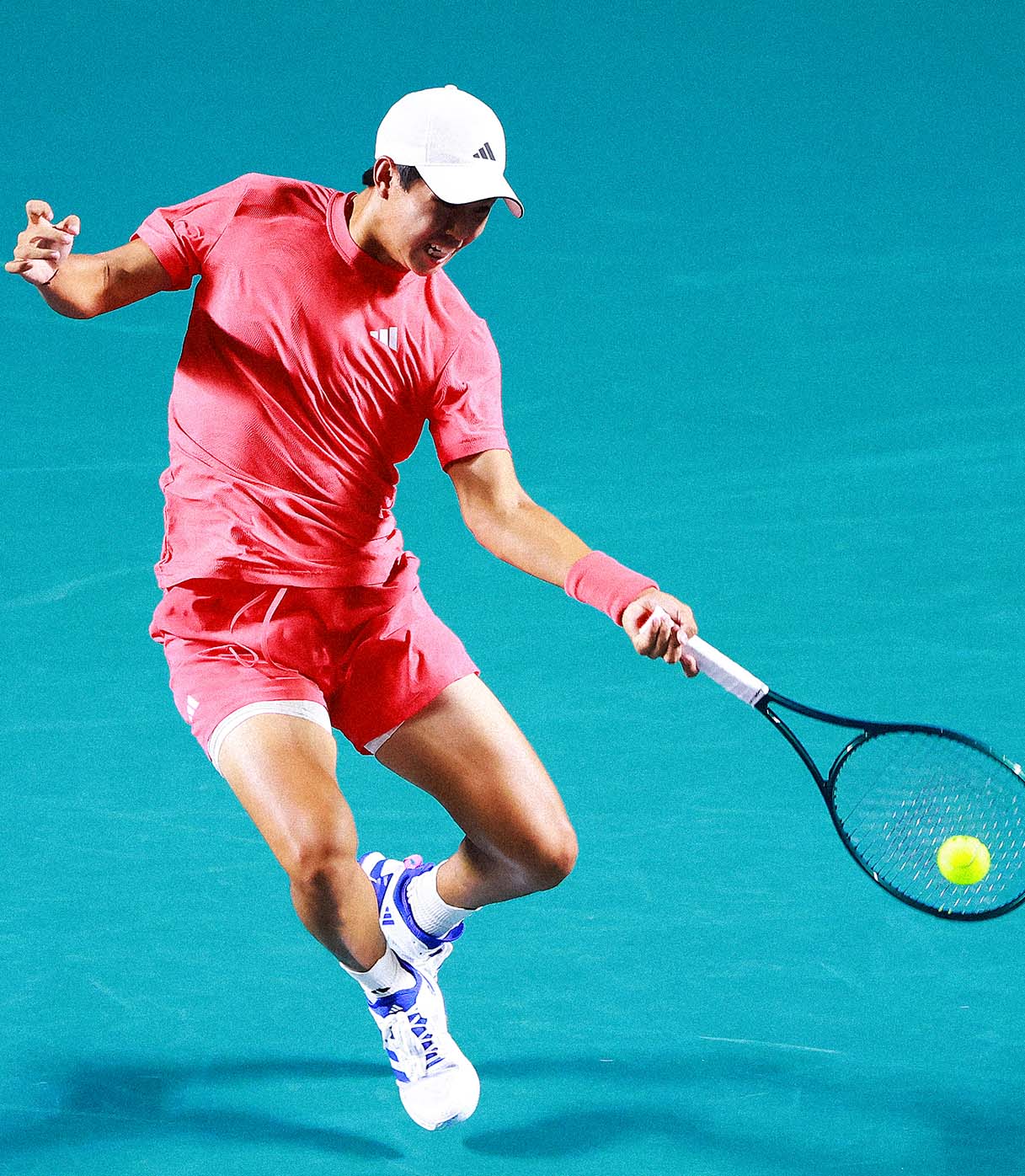
Learner Tien in Acapulco. // Getty
Since he first picked up tennis as a toddler, at every age level, Learner Tien has pretty much always been one of the best tennis players in America. That didn’t mean, however, he spent all those years hell-bent on becoming a professional tennis player. Learner’s first coach was his dad, Khuong, who later remembered that his son’s attitude toward a pro career was always one of detached curiosity rather than obsessive commitment. As he put it in a 2023 Tennis Channel segment:
“His famous line was, ‘Well, I’ll just see how far I could go.’ Do you want to be a pro? ‘Yeah, I’m gonna see how far I can go.’ Learner, do you even like tennis? ‘Yeah, I’m gonna see how that’s gonna go.’”
Learner took his time going pro; he even played a bit of college tennis at USC. Once he did make the leap, however, he flew right up the pro rankings. Watching him now, at age 19, already with two wins over top-five players, I am left wondering if that cool, curious attitude is the healthiest possible way to approach a life in sports. Tien never looks frazzled out there on the court, and he wins a lot, with a game beyond his years.
In 2024, a season spent mostly in Challenger and Futures events, Tien racked up 63 wins, including a 28-match win streak from May to July. By the end of the year he had qualified for the Next Gen Finals, where he lost to fellow wunderkind Joao Fonseca in the championship. Fonseca, with all his firepower, fits the more common mold of a prodigy whose unteachable physical talent is discernible after watching three forehands. But Tien played a technically astute game of angles and foot speed. It was something like seeing veteran guile downloaded into a kid’s body. At the end of that tournament, as usual, I was looking forward to keeping tabs on these players who would, in time, break out at the highest level.
But fast-forward just a few weeks and both of those kids were already upsetting top 10 players at the Australian Open. Tien beat world No. 5 Daniil Medvedev in a five-setter that lasted four hours, 49 minutes. It was something of a mirror match. Medvedev was confronted by a much younger player who could match his irritating shot selection and tolerance for brutally long rallies—and, true to mirrors, Tien was a lefty. Whenever Medvedev hit one of his weird off-speed shots, Tien would hit one right back. These two are needlers and meddlers, winning more with precision and patience than with overwhelming power. It’s impressive for a player to have mastered a tricky style like that by age 19, just a few matches into his first season at the ATP level; it took Medvedev until age 23 to fully discover his own game.
I’m not sure I’ve ever heard the word “smart” as often on a tennis broadcast as I did while watching Tien thrive as a qualifier in Acapulco this week—perhaps dozens of times in the span of a two-set match. This initially gave me some pause; was this torrent of “smart” a product of his game (fair), his name (funny), or a stereotype (less funny)? But from what I already knew of his game, and what he revealed over the course of his fourth-round match against Sascha Zverev on Wednesday, it was clear that Tien really did make the right call over and over, and his success on a tennis court was just as attributable to his savvy decision-making as his fast feet. (Maybe it’s just that other players should also be called smart more often.) Tien poked and prodded at Zverev’s problem forehand, played some killer defense, and beat a moody Zverev, who walked off the court and directly into a car.
Afterward Tien was asked if he was enjoying the courts in Acapulco. It sounded as if he was holding back his honest assessment out of politeness; in all likelihood, the molasses-slow court speed is not ideal for a guy who can struggle to muster enough pace to finish the point. That very thing caught up with him in Thursday’s quarterfinal match against Tomas Machac, who overpowered him in straight sets. But what a week it was for Tien, who won four matches and might have been the bright spot of a tournament otherwise defined by mass gastrointestinal distress. And what a year it’s been for him, too. It’s only February of his first full season on the ATP Tour and he’s already beaten two of the best players in the world. The kid who was ranked outside the top 400 this time last year will wind up in the top 70 next week. He’s still so new to tour life that he hasn’t even solidified his schedule for the clay season, as he told Bounces this week, but he at least knows his next stop. After all his success on slow hard courts this week, he’ll soon have plenty more to chew on at Indian Wells. He and Fonseca were both granted wild cards for the main draw there; Tien’s ranking is so high now, he qualified for the main draw on his own merit, freeing up the wild card for someone else. He’s already just another pro.
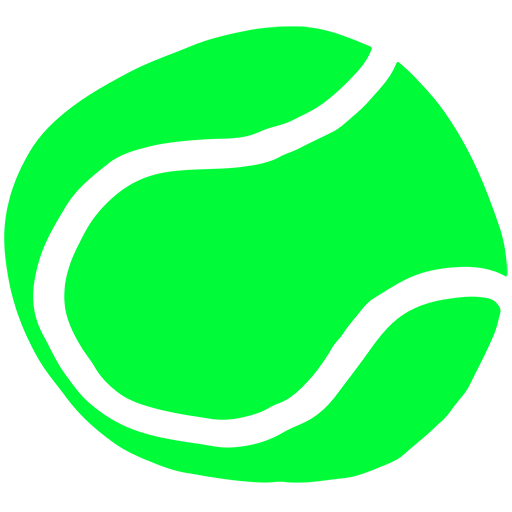
PURE, ORIGINAL TENNIS — SIGN UP!
All That Love
All That Love
All That Love
Jamaican tennis pioneer Richard Russell
always did things big.
Jamaican tennis pioneer Richard Russell always did things big.
By Ben Rothenberg
February 27, 2025
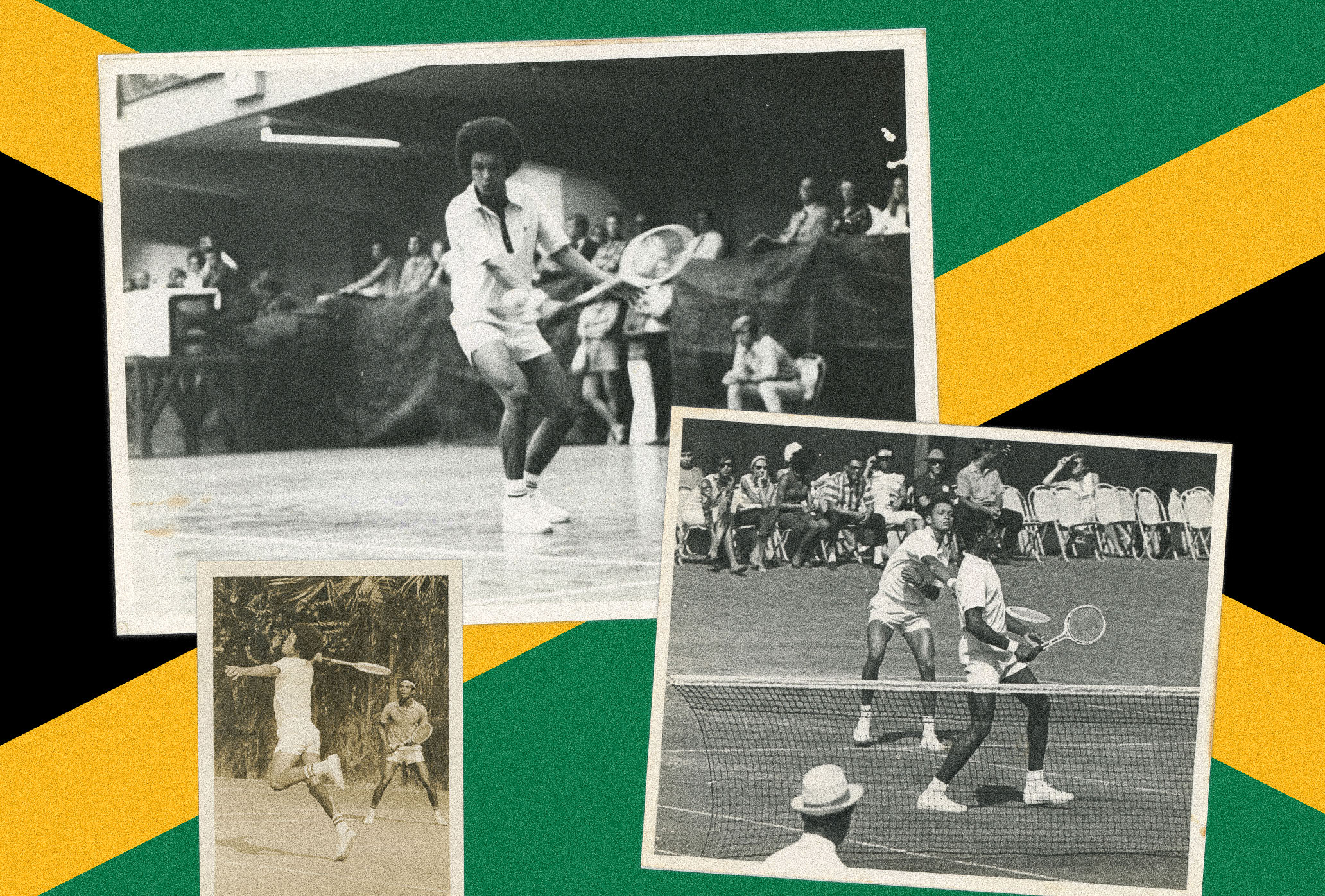
Peak Richard Russell in Jamaica (bottom right with doubles partner Lance Lumsden). //Courtesy of Compton Russell
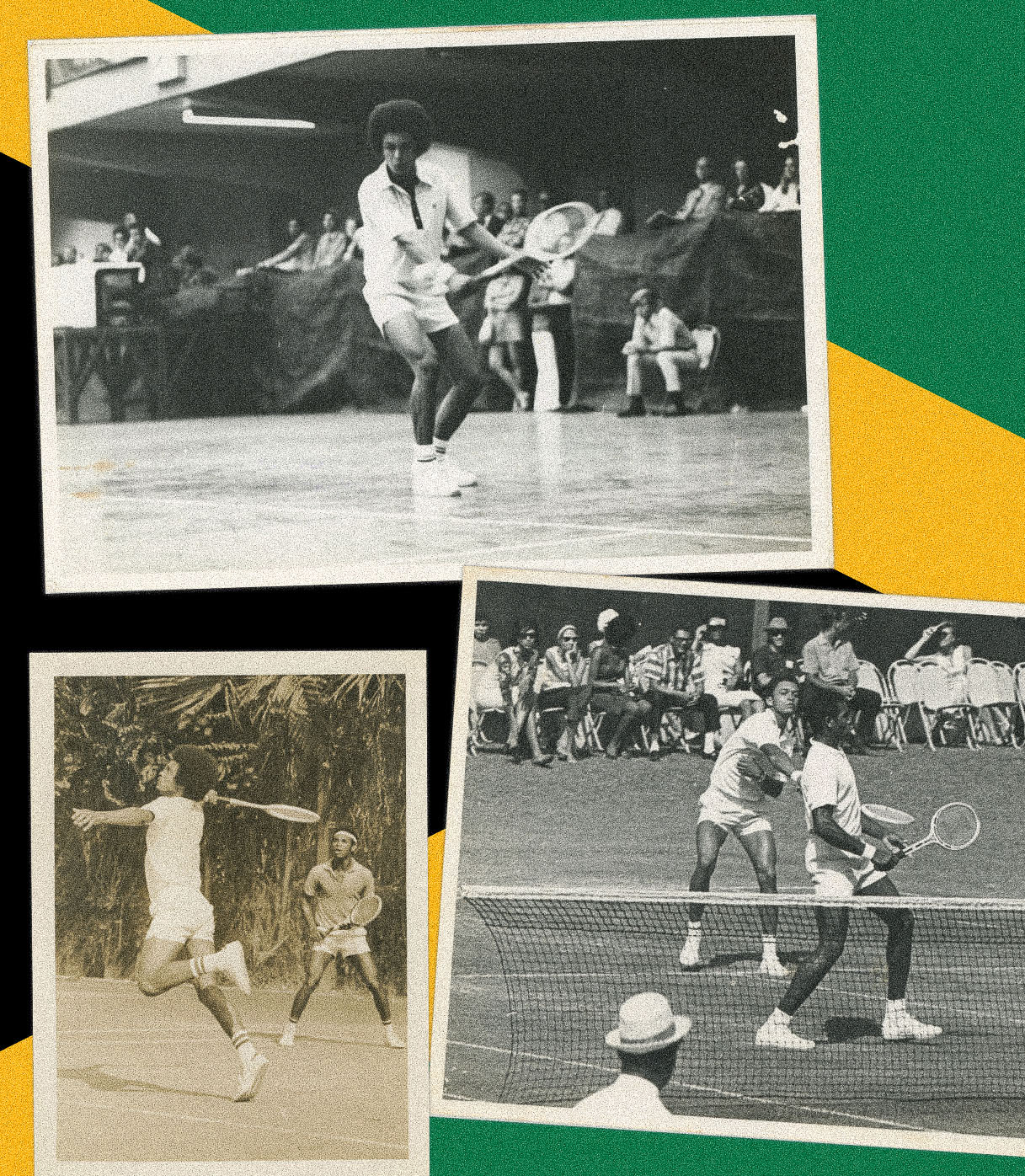
Peak Richard Russell in Jamaica (bottom right with doubles partner Lance Lumsden). //Courtesy of Compton Russell
Richard Russell, an athletic Jamaican teenager, was on track to become a cricket star of the 1960s for the West Indies—or so he thought, until one day he was plucked off the cricket field at his high school, Kingston College, by a teacher who needed players for the school’s undermanned tennis team.
Once he showed potential on court, the tennis coach entered him in the Jamaican National Tennis Championships; he reached the final.
From there, Russell—and his family—rebuilt their lives around tennis. His father, Irving, scuttled long-held plans to build a swimming pool at the family home in Kingston, installing a tennis court instead. His mother, with some annoyance, had to replant her imported roses on another side of the house to make room.
“At 21 Wellington Drive, Kingston, Jamaica, that became the Russell House of Tennis,” Compton Russell, a nephew of Richard’s, told me. The home court was convenient but compact; its perimeter was well below regulation size. “Bro, the runback was about five feet short on each side,” Compton said, laughing.
But the small concrete rectangle was big enough to become a launching pad: Richard developed into Jamaica’s national champion and the best player in the Caribbean. The question, though, was where to go into orbit. Peter Scholl, a German coach who was a protégé of Gottfried von Cramm’s, had been in Jamaica for a spell, but Russell would need to leave the island to find his potential. The rampant segregation still present in the nearby United States made an American path a less viable option.
Seeing how the best players in the world were Australian, Irving Russell cold-called—after being patched through several operators across the world—legendary Australian coach Harry Hopman, telling him he was the father of the Jamaican national champion who had nowhere to train. Hopman said to send Richard over to Australia, and so Richard went.
“He goes to Australia, and Harry Hopman falls in love with him,” Compton Russell recalled.
Richard Russell lived in Hopman’s Melbourne home for a year. His letters back home—which took weeks to arrive—recounted training sessions with Laver, Emerson, Newcombe, Sedgman, and more. So sublime was Russell’s technique on his Eastern-grip forehand and one-handed backhand, Hopman even wound up using Russell as a model in some of his instructional videos. After Australia, the entire world of tennis was open to Russell, and he charted his course.
“His legacy to me is the fact that he really had the courage to go out there and play in the early days when there was no guarantee that anybody could make a living out of playing tennis,” David Tate, a Jamaican who was an early tour companion of Russell’s, told me. “He was a pioneer.”
Making a lucrative living playing tennis was expressly forbidden in those days, in fact, as the most prestigious tournaments remained closed to professionals. So to keep the tennis dream going, the Russell family back in Jamaica hosted barbecue fundraisers on the family tennis court. There was even a sort of proto-crowdfunding: an ad placed in a Kingston newspaper saying that Russell was accepting donations.
“I remember his dad talking about second mortgages,” Compton Russell told me. “Just to get some money, a loan, for air tickets and hotels.”
The Russell hustle back home was propelling a player who, despite modest results, was becoming one of the most beloved players on the traveling tennis tour. To have some fun and make some extra cash on the road, Russell agreed to join his compatriot Lance Lumsden in a musical duo that performed at various stops along the tour, with a signature song called the “Tennis Twin Medley.”
In those years predating the ATP rankings, tournament invitations often largely focused on national and regional champions; Russell, as the best of the Caribbean, got invited to the biggest tournaments. He won a decent share of his matches, too, including a main-draw match at each of the four majors.
“He beat some really well-recognized players,” Compton Russell told me, suggesting an analogue: “In today’s game, Richard would have had a win over somebody like a Tsitsipas.”
The flashiest win on Russell’s résumé came in doubles: In 1966, Russell and Lance Lumsden pulled off a considerable upset in a live Davis Cup doubles rubber in a zonal match in Kingston against the Americans, beating Arthur Ashe and Charlie Pasarell 6–4, 7–9, 14–12, 4–6, 6–4.
Ashe and Russell were easily lumped together as the two top Black players on the circuit; one article in The Louisiana Weekly introduced Russell as “the world’s second ranked black tennis player,” behind Ashe. (“The handsome champion of the West Indies is a speed demon on the court with his ‘Go for broke’ style,” it added.)
Russell was often mistaken for Ashe by autograph seekers at tournaments and learned it was easier if he just signed “Arthur Ashe” without making a fuss. But Russell and Ashe also formed a genuine friendship; Ashe visited Russell in Jamaica multiple times.
Some of Russell’s visits to America, though, proved more challenging in the mid-1960s. One tournament in Pensacola, Fla., held an emergency board meeting to decide whether or not to let this Black Jamaican man play at their all-white club.
“They decided that I’m not an American, I’m Jamaican, and those are the grounds on which they allowed me to play,” Russell told BlackTennisPros.com decades later, upon the occasion of his induction into the Black Tennis Hall of Fame.
Compton Russell recalled Richard sharing a more menacing memory. At a tournament in the Carolinas, Richard was sitting in the back seat of a car, being driven home by the white daughter and son of his host family at that week’s tournament.
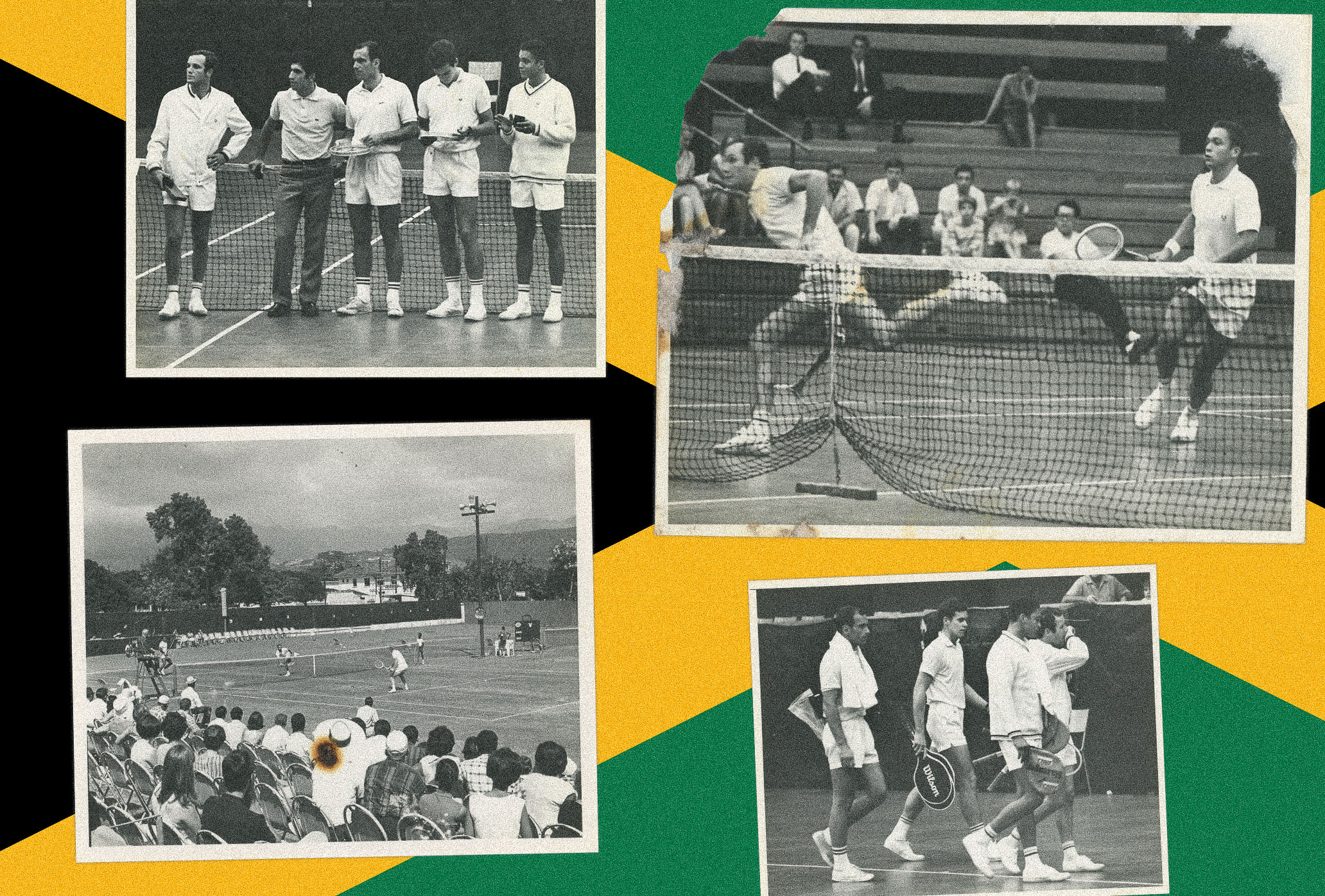
Richard Russell (far right) at the pro tournament he helped organize at the National Arena in Kingston in the early 70s. Top right: with doubles partner Tom Okker. Bottom left: tennis on the old grass courts at the St. Andrew Club in Kingston. // Compton Russell

Richard Russell (far right) at the pro tournament he helped organize at the National Arena in Kingston in the early 70s. Top right: with doubles partner Tom Okker. Bottom left: tennis on the old grass courts at the St. Andrew Club in Kingston. // Compton Russell
“They stopped at a red light, and a car pulled up beside him,” Compton told me. “The other car was packed with guys, and they rolled the window down and started yelling. The girl was driving the car. She took off, and the car started following them. They raced around for two or three miles, pulled in the driveway of the house. And as they pulled into the driveway of the house, the brother and sister jumped out of the car. The other guys pulled right on the roadside beside them.”
The sister and brother, Compton recounted, told Richard to stay in the car as they jumped out to talk down the threatening group: “They explained: ‘He’s not an American; we’re hosting him for a week, and it’s okay. You’d be very wrong to attack him or persecute him. He’s protected. He’s an international athlete. And if anything happens, it’s going to be a big problem.’ And they drove away.
“He only told me a few stories like that,” Compton added. “He never really focused on it in a sense. He was tennis, tennis, tennis, tennis, tennis, tennis, you know?”
Because within the world of tennis, life was pretty good for Richard Russell. Compton, eight years younger, joined Richard on the tour in the early ’70s and got to see his magic up close.
“That’s when I see the aura,” Compton said. “I’m tagging along, and I’m in awe. The tournament directors, the players, the tournament referees, the linesmen, the hosts, the families: ‘Richard, you’re back! So nice to see you, Richard! Oh man, what are you doing later? You’ve got to come to dinner. We’ve got to have lunch.’ All that love—he was larger than life. A bright light.”
Richard’s status as a role model spread beyond his family, beyond Jamaica, and to the rest of the Caribbean commonwealth islands, who used to compete together as one Davis Cup team at that time.
“It meant everything because it showed that one of us could do it,” Mike Nanton of St. Vincent told me. “He gave us a goal to move towards, knowing that we could get there too.”
John Maginley, an Antiguan, said that Russell was “everything I wanted to be.”
“Just his presence, the way he carried himself on the court, off the court,” Maginley said. “He was always immaculately dressed. Spoke very well. Carried himself very well. You never heard of Richard Russell being in anything crazy, in any trouble.”
Maginley and others described Russell as their “icon,” but one who was always approachable and engaged with their own fledgling careers.
“Very simply put, he wasn’t a snob,” John Antonas of the Bahamas said of Richard. “He shared everything. In tennis, when Richard was good, things weren’t quite as they are today; everybody there, they shared everything. We were a family.”
Russell was on the ground floor when men’s professional tennis was being built into a towering business: He became a founding member of the Association of Tennis Professionals (ATP) when it was created in 1972, a calling card that remains a point of pride for Jamaican tennis.
But the shift toward commercialism wasn’t always what he wanted. With his more laid-back approach, Russell grew weary as the Open Era and rankings arrived and the tour became more professionalized, competitive, and demanding. He decamped home for a lucrative coaching gig in Half Moon Bay in Montego Bay; his $100-an-hour lessons were described by one as “like celebrity hour.” He once ushered the professional tour to his own island home, hosting a 1978 WCT Tournament in Montego Bay that featured top stars like John McEnroe and Ilie Nastase.
But while he was giving lessons to vacationing millionaires like the Bronfman family, who founded Seagram’s, Russell also found ways to foster local talent. He initiated a program where kids could make $1 an hour being ball boys and ball girls during the lessons; when the courts weren’t in use by resort guests, the kids were free to play on their own.
“That’s how a lot of us got good,” Maureen Rankine told me. Rankine said her family, “from our neighborhood, didn’t belong in tennis.” But with Russell’s support, she and four of her siblings from the “wrong side of the tracks” went to colleges in the U.S. on full tennis scholarships.
Richard Russell soon had his own sons, Ryan and Rayne, whose tennis-playing careers he wanted to develop. In order to help his sons thrive, Richard organized a bevy of small professional tournaments in Jamaica, as many as 22 in 2002, striking deals with various hotels around the island. The biggest beneficiary, as it happened, was from outside his own family.
“Everything was made available by Mr. Russell for the sons,” Dustin Brown told me. “And yeah, I was fortunate enough to be around, to also be under the wing, almost, just gliding and trying to take all this stuff that could help my career.”
Brown, who switched to representing Germany and later switched back to representing Jamaica at the end of his career, would go on to be the region’s best player of this century, highlighted by a thrilling win over Rafael Nadal in the second round of Wimbledon in 2015.
“Who knows what would have happened if those Futures wouldn’t have been in Jamaica?” Brown told me. “Maybe it would have been no Dustin Brown—you never know.”
Brown said that he hadn’t known of Richard Russell’s own playing career until it started being mentioned in articles to contextualize his own milestone wins at majors. “He was very chill, friendly, and calm,” Brown recalled. “But you knew that he had a lot of pull in Jamaica.”
Another future star had a start in Russell’s Jamaica too. In 2011, just before her 14th birthday, Naomi Osaka traveled from her home in Florida to make her debut at a $10k tournament Russell had organized in Montego Bay. I spoke to Richard in 2022 as I researched a biography of Osaka. He apologetically said he didn’t remember Osaka’s appearance well—not surprising since she lost in the first round of qualifying—but said he took pride in what she’d become from her own Jamaican launching pad.
“We were very pleased and pleasantly surprised and very, very happy that a player like her came to Jamaica early and then became a world-class player,” he said.
In our conversation, Russell told me that girls were going to be a focus of his going forward. “I got a call last year from a tennis coach at a college in Louisville, Kentucky, asking me if I have any female Usain Bolts playing tennis,” Russell said, laughing. “And that was very funny. We recognize now we want to focus first on very athletic female youngsters and introduce them to tennis. I think that’s where we’re heading, as a small country.”
Russell was recovering from two cancers when we spoke, he told me, but he remained driven and full of plans for future ventures. Maureen Rankine, who described herself as Russell’s “His Girl Friday,” said that up until his death, Russell had “plans to continue doing things big.”
Richard Russell died from pneumonia on Jan. 15, 2025, in Montego Bay at the age of 79. His funeral, with an all-white dress code in a nod to Wimbledon, will be held on March 1.
His passing has rekindled email chains and memories among the men whom Russell played alongside across the Caribbean, many of whom have now dispersed to other parts of North America.
“Whatever you write about Richard, put in there that the guy was loved by his fellow guys,” John Maginley told me. “I think that’s the most important message, that we’re in awe of all that he did.”


The Hopper
—CLAY Tennis on Beatriz Haddad Maia’s US Open run.
—Giri on Iga Swiatek’s loss to Jess Pegula.
—Jon Wertheim’s mailbag is full this week.
—Sara Errani and Andrea Vavasori have won the US Open mixed doubles.
—Tim Newcomb on Taylor Fritz and Asics.

PURE, ORIGINAL TENNIS — SIGN UP!
Walking Tall
Walking Tall
Walking Tall
Diego Schwartzman forced the issue.
Diego Schwartzman forced the issue.
By Giri Nathan
February 20, 2025
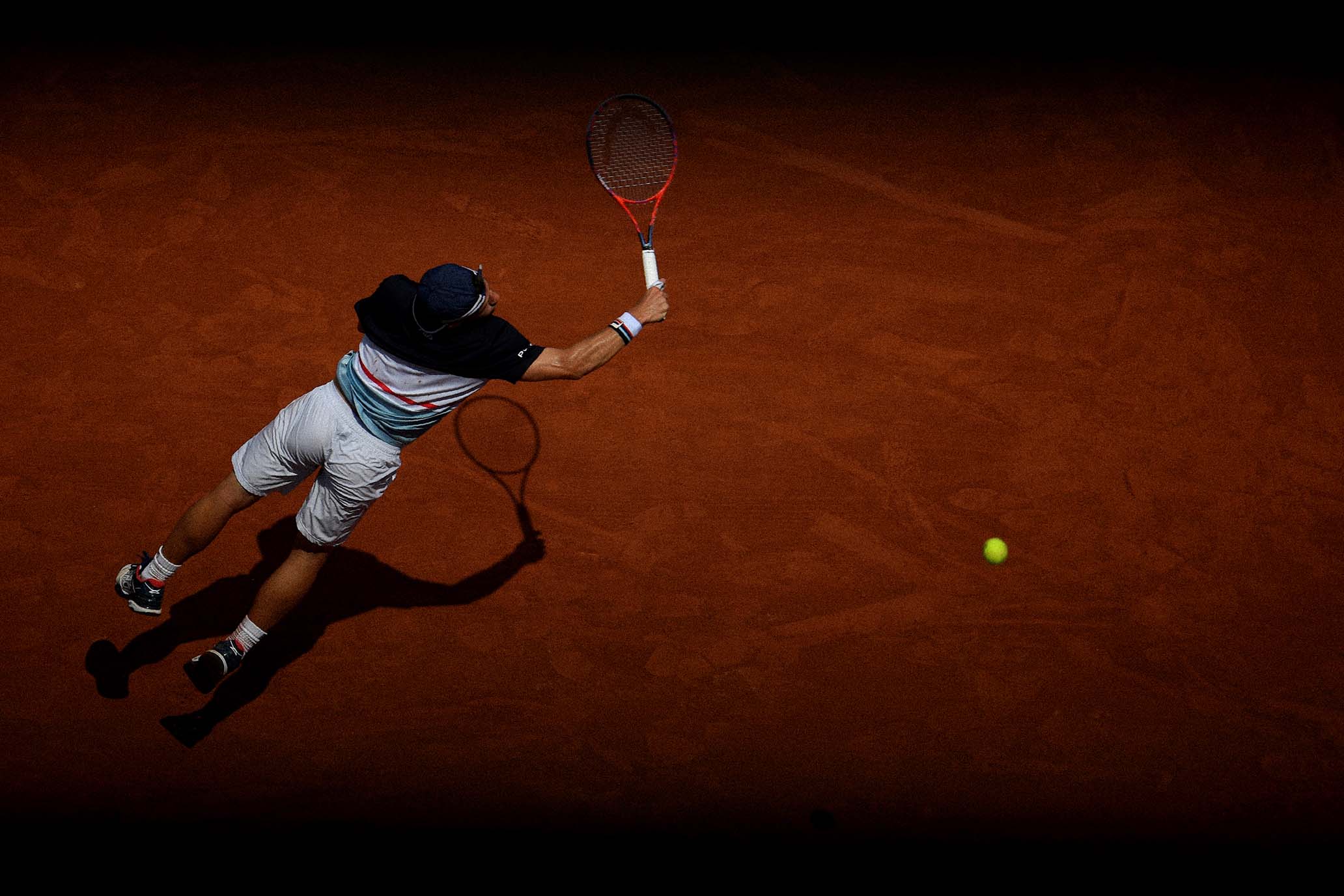
Diego Schwartzman takes flight at Roland Garros, 2018. // Getty

Diego Schwartzman takes flight at Roland Garros, 2018. // Getty
Imagine, 50 years from now, looking back at the current era of the ATP, but seeing its players only as outlines, shadows cast against a paper screen. You’re trying to remember who is who. Many of those silhouettes would be lost to time; you’d lived plenty of life since then. Plenty more would seem interchangeable, as there are so many ATP players with roughly the same proportions, to say nothing of their same-ish styles of play. But one silhouette would be unmistakable. The racquet, dangling at rest, almost grazes the ground. A backwards hat sits on top of his head. He seems like he’d have to strike most balls at head height. There’s no mistaking Diego Schwartzman, who retired from tennis last week. He looked like no one else out on the court, and his tennis looked like nobody else’s tennis.
On a tour dominated by fast serves struck from high vantage points, and powerful ground strokes levered by long arms, Schwartzman was an outlier, officially listed at 5 foot 7. When I had a chance to hang out with him for a profile a few years ago, I realized that figure was probably two inches overstated. Quite often, at the coin toss or at the handshake, Schwartzman was clearly a full foot shorter than his opponent. And during his peak, which began at the end of 2017 and ran through 2021, he could beat almost all of them. In 2018, when he first entered the top 10, he was the shortest player to do so in 37 years.
Most of the shorter players in the sport opt for a counterpuncher’s style, patient and opportunistic. Schwartzman, meanwhile, was thrilling because of how persistently he forced the issue. He was short, but such an explosive athlete that he could access power anyway. And he played with a racquet that was two inches longer than the standard, the maximum length permitted on tour, which extended his reach and leverage. He used an extreme semi-western grip on his forehand that made it easier to manage high balls. On the flip side, it can be harder to deal with low balls—fortunately not an issue for Diego, who could easily meet them where they were. His return was among the best in the world; for six seasons he landed in the top three in percentage of return games won. The serve was weak, sure, but once the rally had gotten to neutral, he was as pure a ball-striker as anyone alive. To me this was one of the greatest sights in this or any sport: the diminutive Argentine, hurling himself off the clay to hit a high-bouncing ball about six feet high and plucking a winner out of the air.
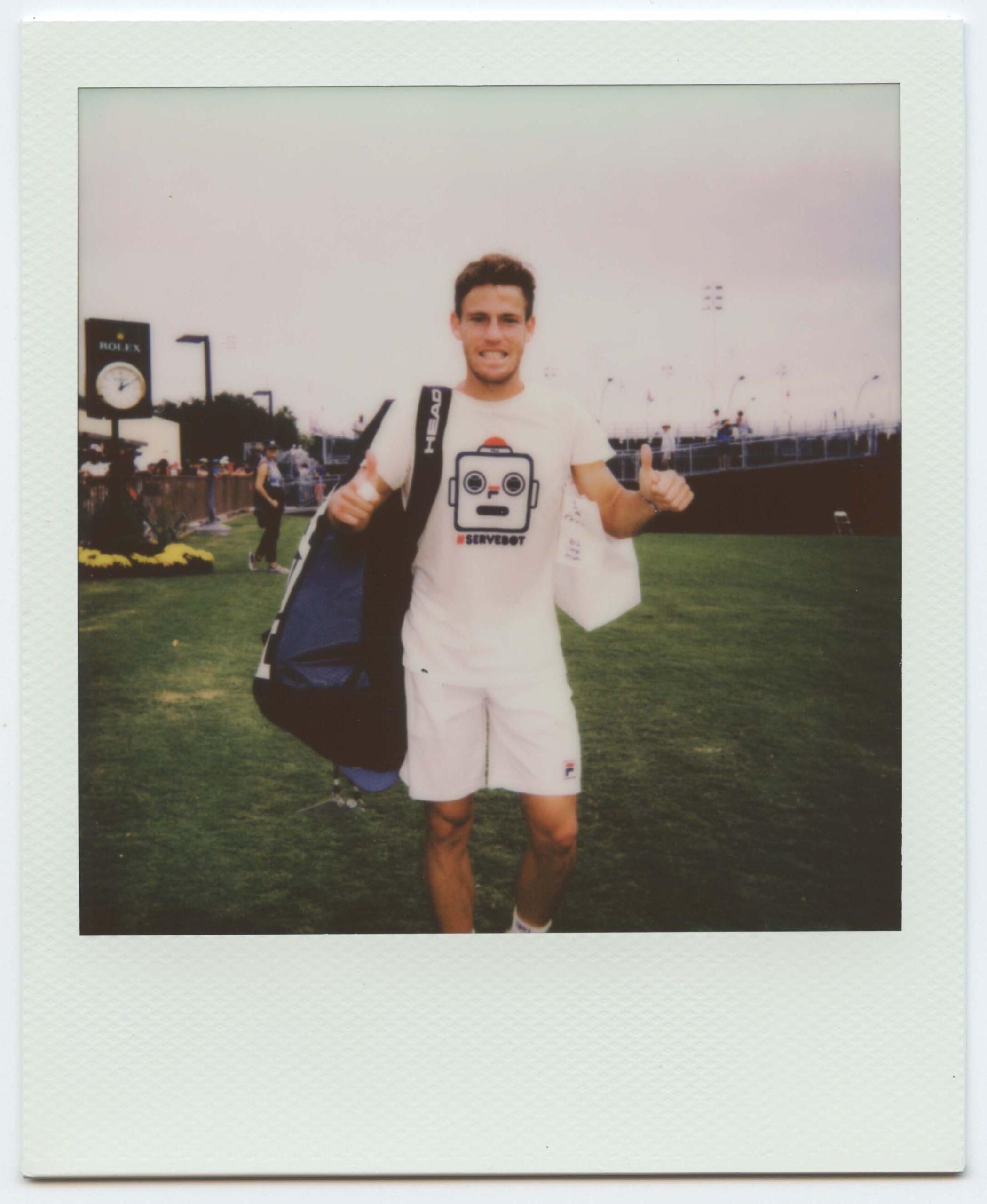
Diego in tennis paradise, 2021 // David Bartholow
Everything he accomplished, he did it by outhitting his opponents from the baseline, no cheap points. And in time all the qualifiers fell away; he wasn’t just good on clay, he wasn’t just good for a short guy, he was just plain inarguably good, with an excellent résumé: the No. 8 ranking, four titles, and deep runs at the Slams (four quarterfinals, one semifinal). His most memorable match, for many fans, might even have been a loss. Back in 2018 he went up a set and a break on Rafael Nadal at Roland-Garros, looking as good as anyone ever had against Rafa on Court Philippe-Chatrier, putting him in a peril that very few players managed over a two-decade span. Then rain suspended play. Nadal came back the next day and won. But two years later, in Rome, Schwartzman did add his name to the prestigious list of players who managed to beat the king of clay. In one interview he told me that he could feel himself accumulating respect in the locker room with every big win he pulled off on the court.
Once you got to know Schwartzman’s backstory—his upbringing in poverty during Argentina’s economic depression—you could see that his success was statistically unlikely in ways beyond just the height. He’d had to work. But he bristled at having his success reduced to mere persistence. He was also, it bears reiterating, an otherworldly talent. Persistence alone won’t get you a first step that fiery, or a touch that soft. I liked how he put it in a recent first-person retirement essay: “Just being a fighter does not get you to the top. I was there because I was good at this sport. Nobody gave me a gift. I earned this.”
In that same essay, Schwartzman identified the precise moment of his decline. During a match at Hamburg in 2022, he felt an unfamiliar sensation, cramping and shaking. That feeling persisted and his results never recovered. He fell out of the top 100 the next season. Here was another reminder not to take any of your favorite players for granted. For a time, Diego and his close friend Dominic Thiem played brilliant matches against each other, and both men seemed like they’d be tour staples for years to come. As it turned out, their primes were stunning but brief. Neither man extended his success into his 30s, and both retired at ages that might as well be mid-career in the contemporary game.
Schwartzman announced that he would hang up his racquet, at age 32, at his home tournament in Buenos Aires. He’d won the title there in 2021 without dropping a set. Heading into last week, Schwartzman had barely played at all in the prior six months, just one Challenger match—a loss—to tune up for his last stand. There, Schwartzman produced one final miracle: a three-set defeat of the No. 40, the big-serving Nico Jarry, extending his career one more match. That was about as far as he could go. In the final points of his very last match, against Pedro Martinez, Schwartzman was cheered by the entire stadium. The umpire tactfully let them sing their hearts out before eventually cutting it off. There were tears in Schwartzman’s eyes during those last few rallies. His peers, too, sent him off in a chorus of praise. Holger Rune remembered the time, as a rookie short on cash, that Schwartzman walked up and paid for his food. We may never again see a top 10 player quite like him. The man known as El Peque can have the last word: “I have a small body, but it gave the biggest players in our history bad moments.”


The Hopper
—CLAY Tennis on Beatriz Haddad Maia’s US Open run.
—Giri on Iga Swiatek’s loss to Jess Pegula.
—Jon Wertheim’s mailbag is full this week.
—Sara Errani and Andrea Vavasori have won the US Open mixed doubles.
—Tim Newcomb on Taylor Fritz and Asics.

PURE, ORIGINAL TENNIS — SIGN UP!
Mixed Results
Mixed Results
Mixed Results
The U.S. Open shakes up the mixed doubles format.
The U.S. Open shakes up the mixed doubles format.
By Ben Rothenberg
February 13, 2025
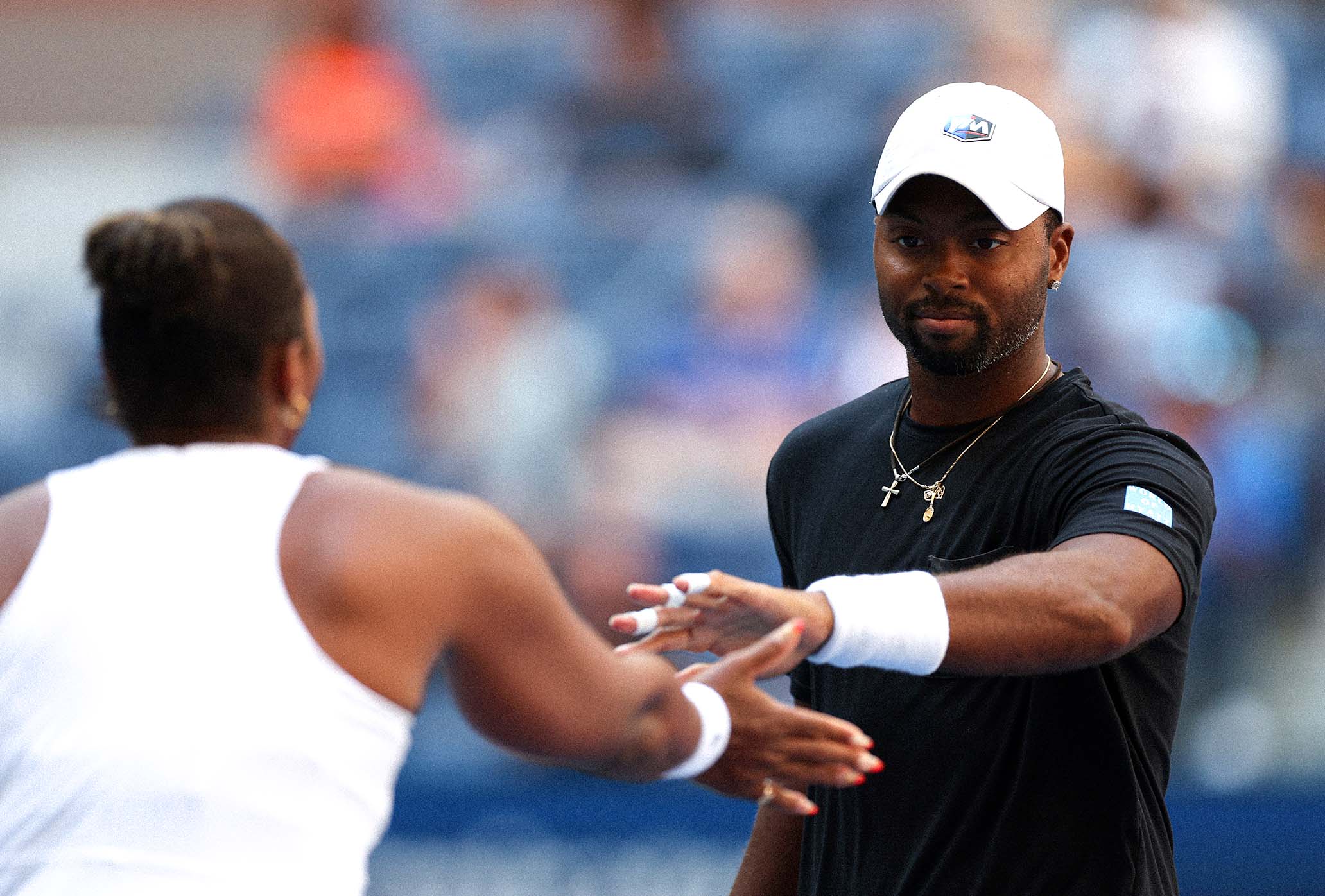
Taylor Townsend and Donald Young, runners up in the US Open mixed doubles draw in 2024, the last of its kind. // Getty
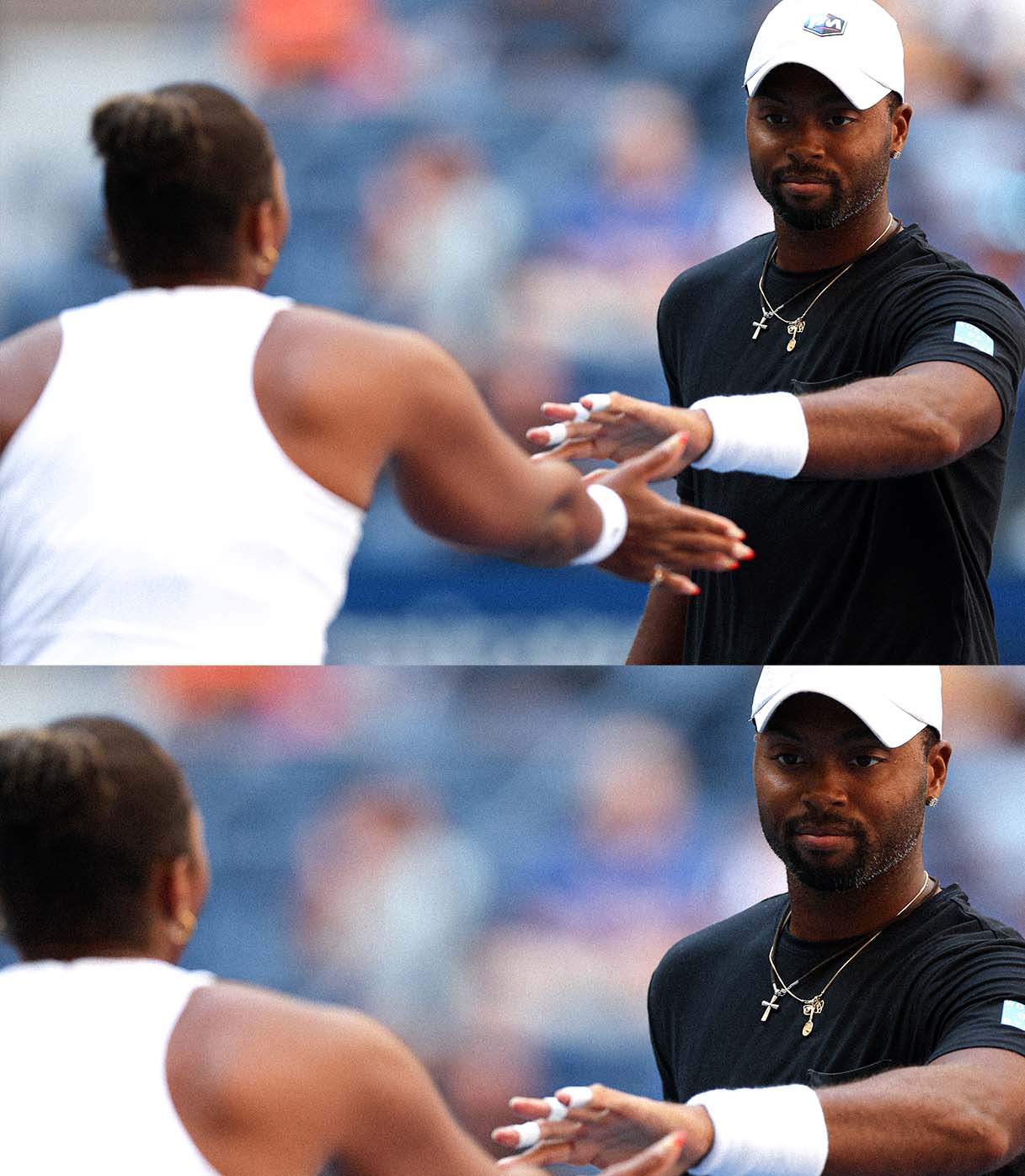
Taylor Townsend and Donald Young, runners up in the US Open mixed doubles draw in 2024, the last of its kind. // Getty
All sorts of Olympic sports—archery, curling, judo, sailing, shooting, swimming, track, and more—have contrived newfangled mixed formats in recent years because of how dynamic and appealing mixed-gender competitions are considered to be. Tennis, meanwhile, was invented with mixed doubles already at the forefront: One of my favorite factoids is that when Major Walter Clopton Wingfield published the first set of lawn tennis rules back in 1873, the lone illustration in the rule book depicted a mixed doubles match.
But instead of adding new trophies, mixed doubles has been atrophying.
It’s evident what makes the public care about mixed doubles: the participation of singles stars. It’s that simple. There have been two spotlight moments for mixed doubles in the past decade, and both involved Serena Williams and a member of the Big 4: when she played against Roger Federer in the 2019 Hopman Cup, and when she partnered with Andy Murray to play the mixed at Wimbledon later that same year.
But those were unicorn events, and as singles stars opt out over and over at the majors, doubles—both same-gender and mixed doubles—has steadily become the domain of an increasingly separate population of players: doubles specialists. And doubles specialists have consistently not been able to generate crowds or attention or value for the biggest tournaments.
The U.S. Open, to its credit, recognized this reality. Rather than mindlessly running another irrelevant, dead-weight mixed doubles competition this year, the U.S. Open believed enough in the potential of mixed doubles to breathe life into the format with a radical revamp, as they officially announced Tuesday after weeks of leaks:
“TENNIS’ BIGGEST STARS WILL HAVE AN OPPORTUNITY TO COMPETE FOR A COVETED MIXED DOUBLES GRAND SLAM TITLE, A MULTI-MILLION DOLLAR PURSE AND A $1 MILLION PRIZE.”
Instead of taking place during the final week of the tournament, when all the biggest stars are laser-focused on late-round singles matches (or already on flights home if they’ve lost), the mixed doubles competition will be an amuse-bouche before the main draw, taking place on the Tuesday and Wednesday before the tournament. Instead of being shunted to the outer courts, mixed doubles matches will be held exclusively at Arthur Ashe Stadium and Louis Armstrong Stadium. And instead of mixed doubles champions being paid peanuts, there will be $1 million for the winning pair, and an overall prize purse in the millions.
To make participation less daunting on the eve of a major, matches will be streamlined into best-of-three-set matches with short sets to four games, no-ad scoring, tiebreakers at 4–all, and a 10-point match tiebreak in lieu of a third set. The final will be a more standard-length mixed doubles match, a best-of-three-set match with sets to six games, no-ad scoring, tiebreakers at 6–all, and a 10-point match tiebreaker in lieu of a third set.
The biggest change: Instead of being contested almost entirely by doubles specialists who haven’t captured the public’s attention or imagination in previous editions, the draw will largely be filled with singles stars. The U.S. Open mixed doubles field will be made up of 16 pairs, with eight entries based on singles rankings only—rather than singles or doubles rankings as it was previously—and the other eight entries being wild-card teams.
Taylor Fritz and Jessica Pegula, the two runners-up in the U.S. Open singles draws last year, both indicated a desire to participate in the U.S. Open’s press release on the new reformatting.
The complaints from traditionalists—and doubles specialists outraged at being shut out—have been predictable and, I think, easily shot down. Most prominently, the reigning U.S. Open mixed doubles champion pair of Andrea Vavassori and Sara Errani put out a statement calling the new format a “pseudo-exhibition.” But surely mixed doubles at majors, by not giving ranking points, already met the most common definition of an exhibition event? Although if mixed doubles was an exhibition event before, admittedly, it was a bad one: Exhibition events are designed to draw crowds and sell tickets to see stars, and those star players collect big paychecks for participating; mixed doubles at majors hasn’t met any of those appealing criteria for a long time. If mixed doubles has become a bona fide “exhibition” event with this change, that’s an upgrade from the afterthought it was before.
Vavassori and Errani also cited “tradition and history” as reasons for keeping things the old way. But the meaningful “tradition” of mixed doubles, historically, wasn’t to assure that no one gave a shit about it, which is all a lack of change would accomplish with the current trajectory of the category. To be more blunt, the idea that a mixed doubles title was something worthy of the “Grand Slam” label in its recent iterations has seemed increasingly hollow as the mixed doubles fields grew weaker and more anonymous, and as the pay gulf became so stark as a result.
There’s been a lot of pity for doubles specialists on social media since this announcement—much of it from the doubles specialists themselves—and I don’t think that will prove helpful to their cause. What would be helpful, I think, is for this to be a wake-up call. If this comes off as harsh toward doubles specialists, it’s meant to: I think they’ve had their chance to prove themselves as attractions for years now—especially with every doubles match now fully produced and available to stream—and they’ve consistently shown that they cannot. The idea that the U.S. Open should maintain a system of handouts or charity for doubles specialists rather than revamp the mixed doubles event into something worthy of being showcased at a Grand Slam is unconvincing, especially because the prize money for the event that they’re whining about missing out on was so paltry compared with the more-than-quadrupled amount the tournament thinks mixed doubles can be worth now.
My hope is that the U.S. Open deciding to make mixed doubles into something that people will watch and care about—and how they determined the best way to do that—will light a fire under the complacency of doubles specialists about their places in the business model of the sport, if they care enough to fight for it. And even without learning to win singles matches, there’s still a way into the mixed doubles draw: They can learn to become entertaining, compelling, and popular enough in the next few months to convince U.S. Open organizers that they should be awarded some of those wild-card entry spots.
If they can do that, the sport will be stronger for it, and everyone will win big.
An expanded version of this story can be found at Bounces, Ben Rothenberg’s new Substack newsletter about the world of professional tennis, which you can subscribe to here.


The Hopper
—CLAY Tennis on Beatriz Haddad Maia’s US Open run.
—Giri on Iga Swiatek’s loss to Jess Pegula.
—Jon Wertheim’s mailbag is full this week.
—Sara Errani and Andrea Vavasori have won the US Open mixed doubles.
—Tim Newcomb on Taylor Fritz and Asics.

PURE, ORIGINAL TENNIS — SIGN UP!
Wilson Drops Marta Kostyuk’s New Intrigue
Wilson Drops Marta Kostyuk’s New Intrigue
By Tim Newcomb
February 11, 2025
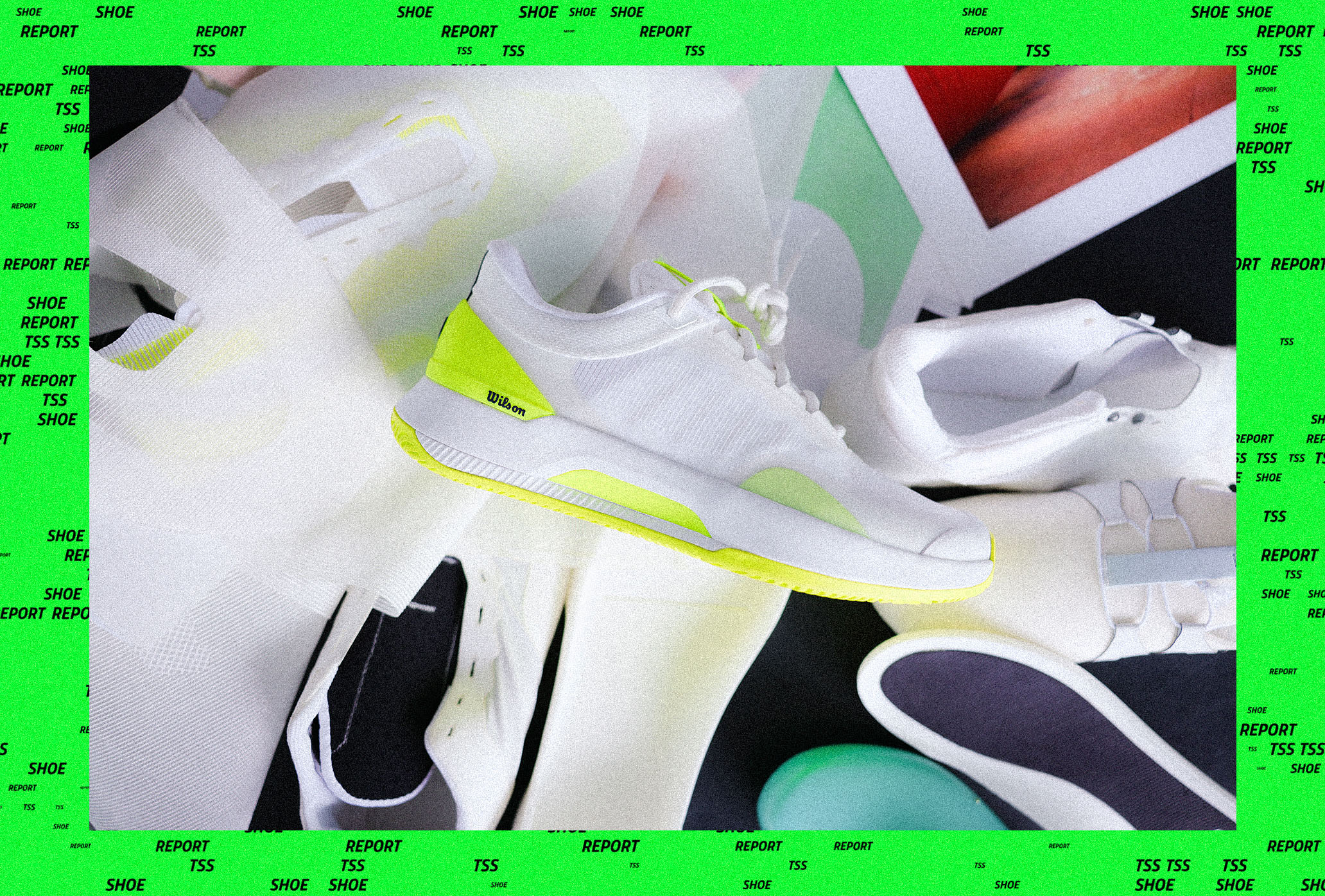
Image courtesy of Wilson

Images courtesy of Wilson
Wilson’s premier head-to-toe athlete, Marta Kostyuk, has been sporting a version of an on-court tennis shoe she’s helped design since the 2024 U.S. Open. She even wore a player-edition colorway for the 2025 Australian Open. Now Wilson is preparing the retail release of the women’s-specific Intrigue this month.
“Focusing on a women’s-specific design was our main goal from the very beginning,” Tate Kuerbis, Wilson senior director of footwear design, tells me about the project. “To do this correctly, we started working immediately with our head-to-toe athlete Marta Kostyuk.”
Kostyuk helped lead the design from every step, giving the Intrigue a narrower heel and more generous forefoot fit needed for a female player. Designers also added additional comfort underfoot from the start. The Intrigue features three new technologies for Wilson, including an engineered mesh upper, a lacing system meant to allow customization, and a thicker sockliner focused on cushioning.
The new Intrigue lineup will feature a Tour, Pro, and Lite version, each with differing price points. Kuerbis says the Lite may double as both a casual performance and off-the-court style. Kuerbis calls the aesthetics of the Intrigue lineup clean, modern, and simple. His goal was to create “iconic and timeless designs that can stand the test of time, especially for a legacy company such as Wilson.”
The Intrigue name ties back to a line of women’s-focused tennis products Wilson launched in 1992. That 30-plus-year-old lineup even included a shoe. So, even while the new Kostyuk-led lineup may borrow a name from the ’90s, everything else about the Intrigue comes fresh for 2025.
Follow Tim Newcomb’s tennis gear coverage on Instagram at Felt Alley Tennis.
SIGN UP — YOU'RE ONLY AS GOOD AS YOUR SECOND SERVE.

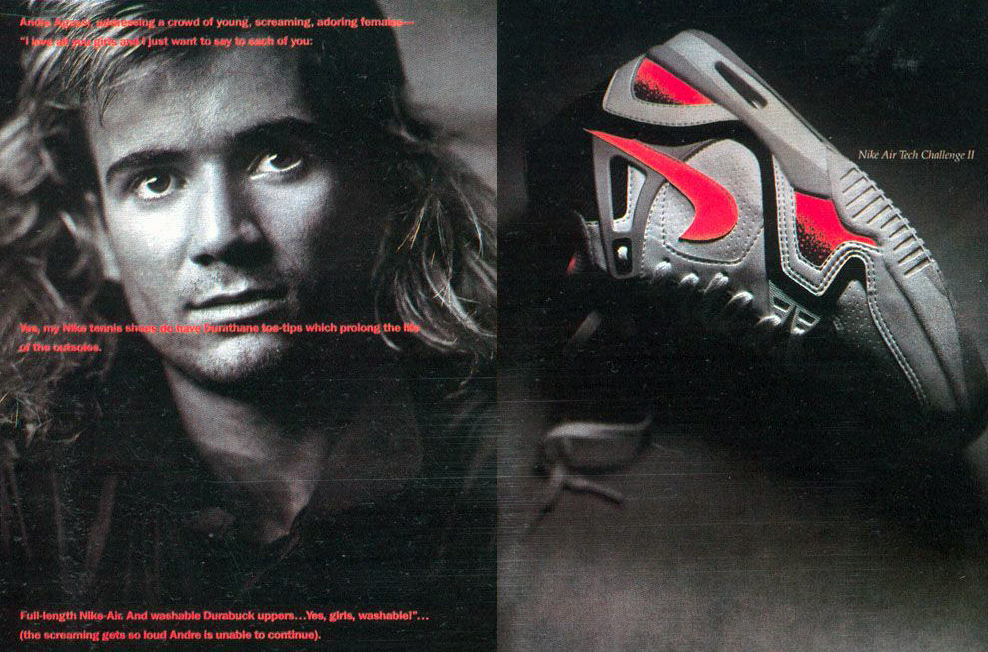
SIGN UP — YOU'RE ONLY AS GOOD AS YOUR SECOND SERVE.
Dynamism & Struggle
Dynamism & Struggle
Dynamism & Struggle
Simona Halep didn’t always make it look easy.
Simona Halep didn’t always make it look easy.
By Giri Nathan
February 7, 2025
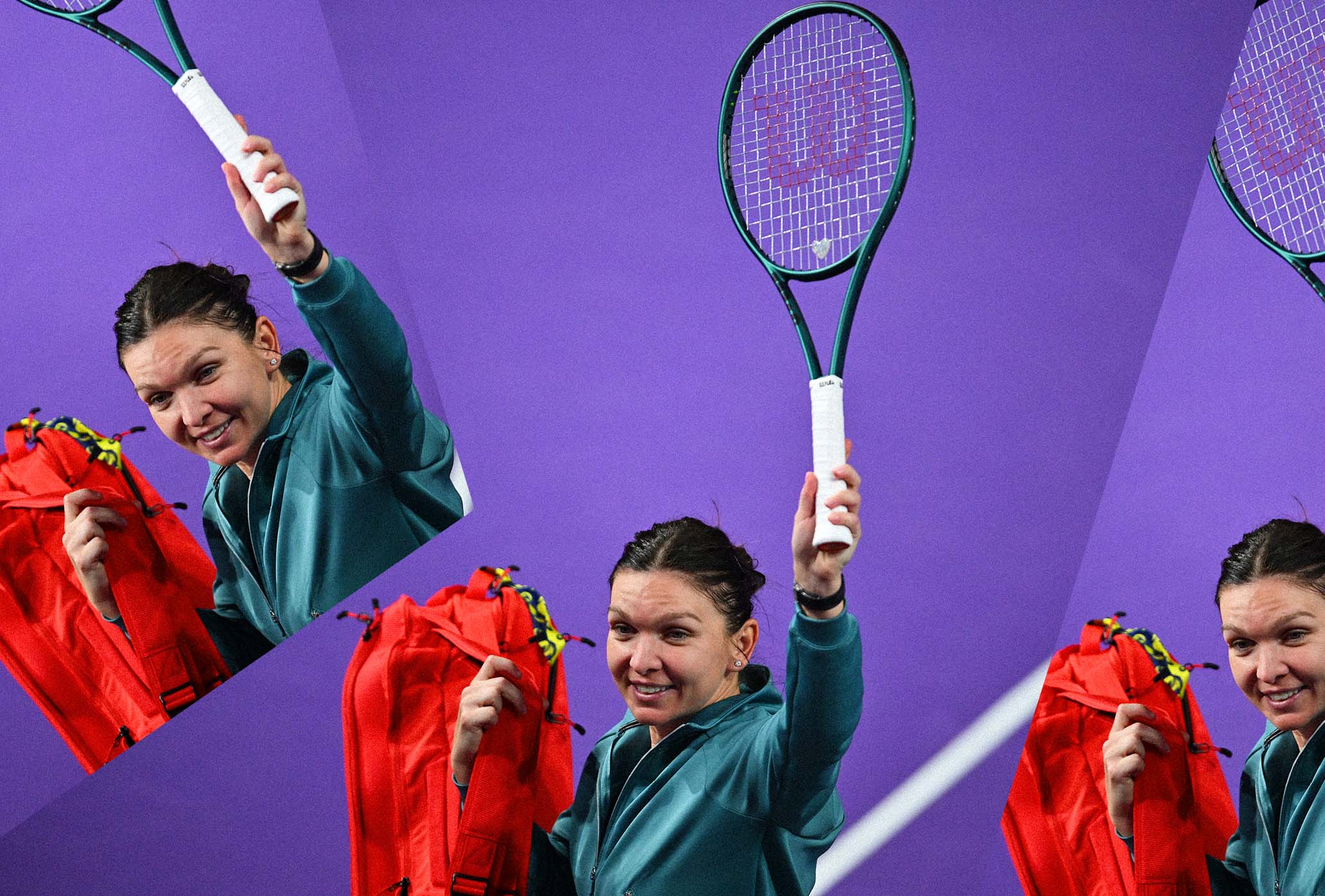
Simona Halep calls it a day in Cluj-Napoca. // Getty
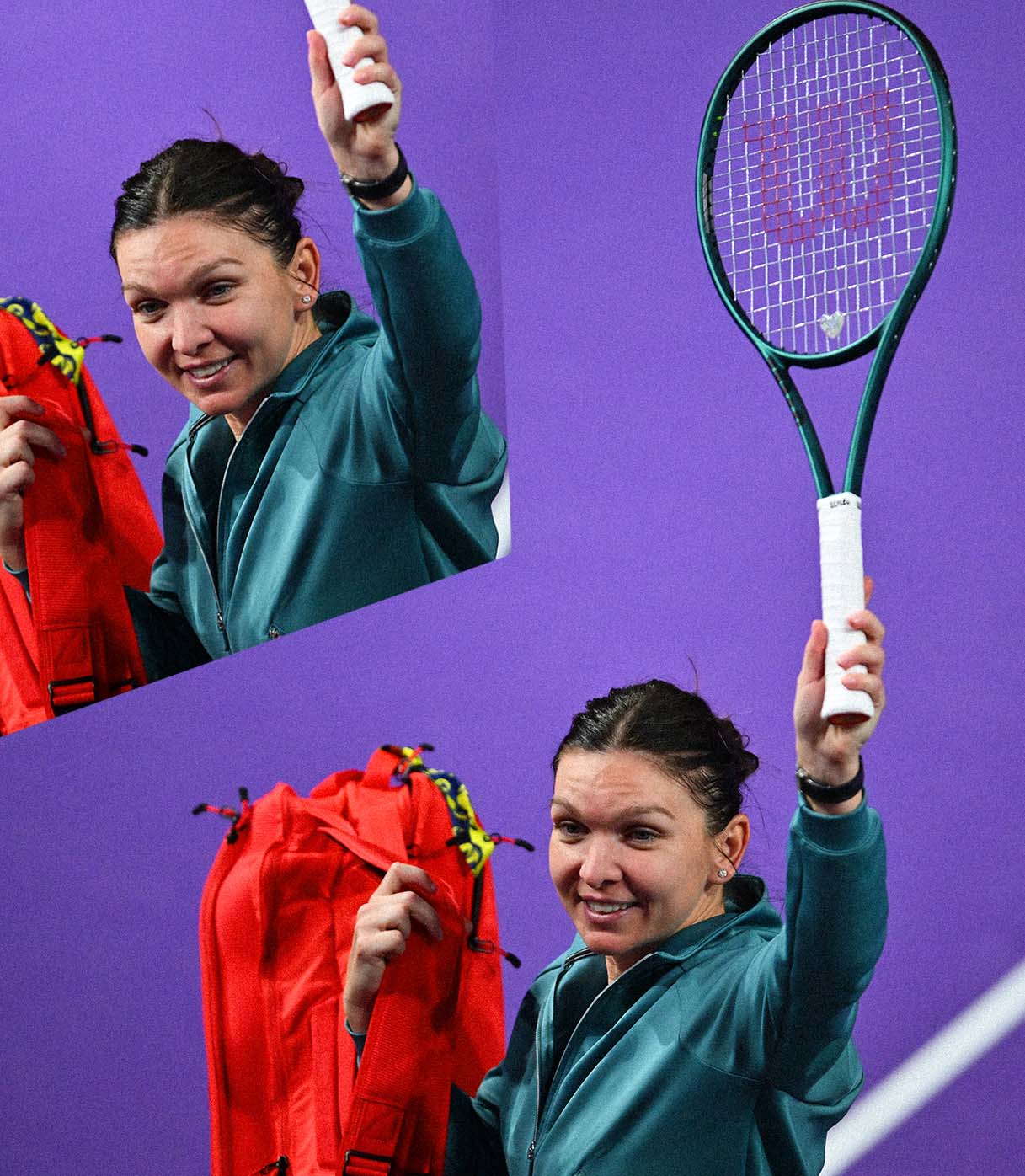
Simona Halep calls it a day in Cluj-Napoca. // Getty
I had been expecting a slow but steady Simona Halep comeback. Not a sudden retirement this week at age 33. But this last phase of her career has been sad and murky, at every turn, so this fits.
In 2022 she hired Patrick Mouratoglou as coach, which was followed soon by poor results, an on-court panic attack, and a public Instagram apology from Mouratoglou for those poor results. Later that year she made a Wimbledon semifinal and returned to the top 10. But she also received a provisional suspension after tests revealed the banned substance roxadustat—which Mouratoglou also eventually apologized for, since his team gave her the tainted collagen supplement. In 2023 there was the full-on doping suspension for irregularities in her blood samples over time. Then in 2024, after an appeal, that was shrunk from four years to nine months as she was found at “no significant fault or negligence” for the adverse test result.
After all that, she returned to the court as a wild card in Miami 2024 and immediately went three sets with Paula Badosa. That’s what had me suspecting a comeback. It was misleading. That was the last time she’d ever get remotely close to beating a player of her own stature. She played just five more matches in total, and won one. She said this week that she has been unable to recover from her injuries, in particular one to her knee cartilage. Thus, a brief retirement speech, in her home country of Romania, at the WTA 250 in Cluj-Napoca.
It’d be a shame if this dismal coda made people misread what is pretty clearly a Hall of Fame career. To pierce through the gloom, just return to memories and footage of Halep at her peak, from 2017 through 2019, as one of the most adept counterpunchers ever to play in the WTA. A short-statured, compact player, Halep ricocheted all over the court like a flung Super Ball. With her explosive first step and ease recovering from the corners, her court coverage could confound any opponent. Other people’s power didn’t bother her—she loved to redirect their pace—and her own low power was no problem. She simply figured out how to hurt her opponents in situations where they thought it impossible to get hurt. Even while careening from one sideline to another she could throw her full body weight into punishing counterattacks. Halep is an all-time elicitor of where did that come from?
One theme of her early career, though, was some reticence when closing out big matches. She lost her first three major finals, all in three-setters. Most conspicuously, Halep lost the 2017 Roland-Garros final despite being up 6–4, 3–0, to an unestablished teenager; the upside of that is that we can now say “Grand Slam champion Jelena Ostapenko.” Less troubling, but also disappointing, was her valiant 2018 Australian Open, where she played her way to the final on an ankle she had grotesquely injured earlier in the tournament, and lost narrowly after a defensive master class against Caroline Wozniacki.
At the next major in 2018, Halep arrived at Roland-Garros to rectify last year’s result. At that point she was world No. 1, in her prime at age 26, with $26 million in prize money, a fresh Nike deal, and still without a major title. She fell down a set and a break to Sloane Stephens in that final. And then, as she explained later, she remembered that she’d been on the opposite end of that score line the previous year. So she knew that a recovery was possible. She won that final by remembering how she lost it.
With her second major win, there was less intrigue, because she delivered arguably history’s cleanest performance in a major final. This was at Wimbledon in 2019, despite facing the tournament’s seven-time winner in Serena Williams. Halep dismissed her in 56 minutes, only hitting three unforced errors, a near-mystical performance. Halep, listening to audio from that championship point this week, said it was the most important and beautiful match of her career.
She didn’t always make it look that easy. Her matches were thrilling precisely for that reason, for all the dynamism and struggle. “I don’t want to cry. It’s a beautiful thing,” she said in her retirement speech, in Romanian. “I became world No. 1, I won Grand Slams. It’s all I wanted. Life goes on.”


The Hopper
—CLAY Tennis on Beatriz Haddad Maia’s US Open run.
—Giri on Iga Swiatek’s loss to Jess Pegula.
—Jon Wertheim’s mailbag is full this week.
—Sara Errani and Andrea Vavasori have won the US Open mixed doubles.
—Tim Newcomb on Taylor Fritz and Asics.

PURE, ORIGINAL TENNIS — SIGN UP!
Nike’s Vapor Franchise Expands to Start 2025
Nike’s Vapor Franchise Expands to Start 2025
New on-court shoe releases in March.
New on-court shoe releases in March.
By Tim Newcomb
February 5, 2025
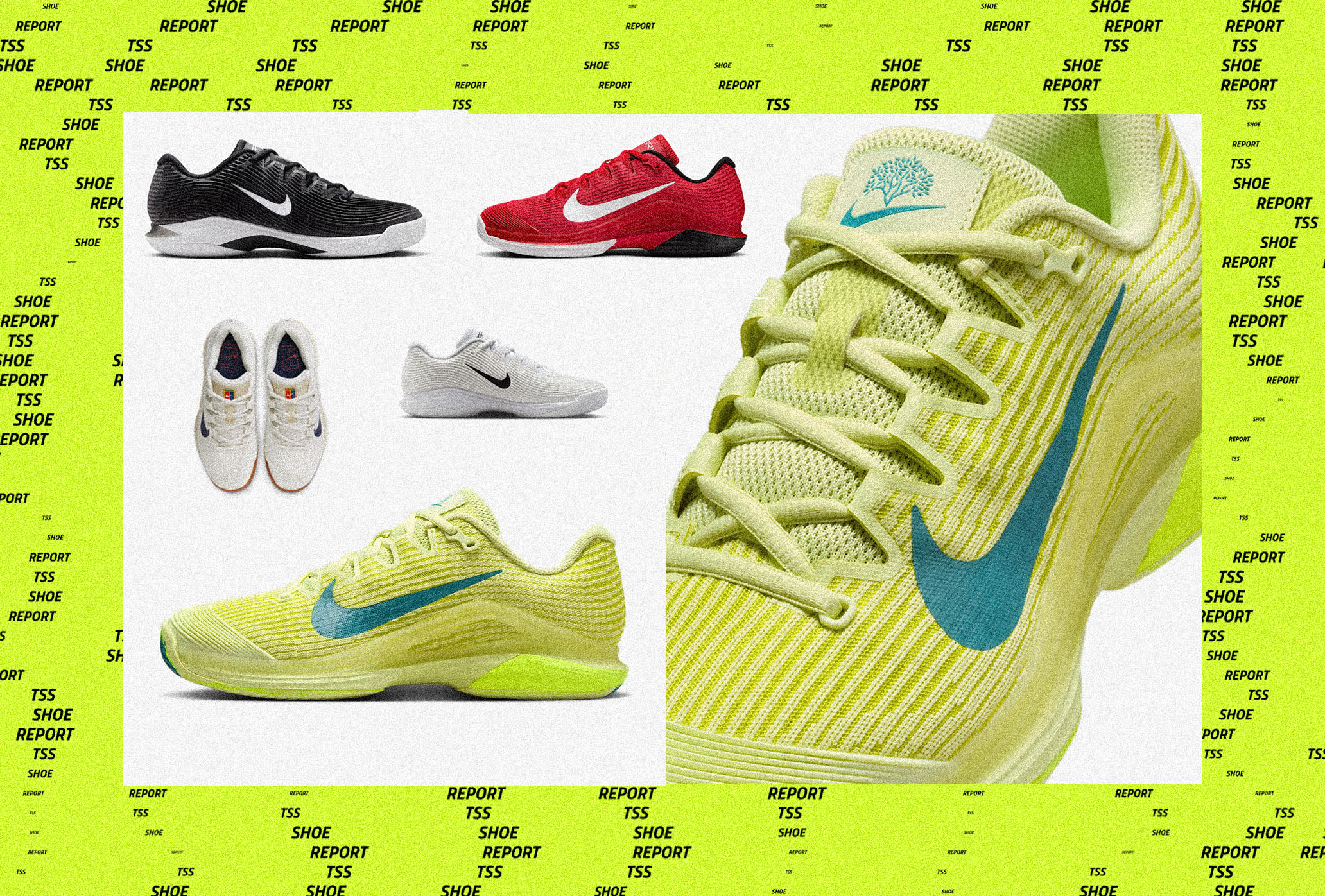
Images courtesy of Nike

Images courtesy of Nike
If you’re a fan of the latest Nike Vapor lineup, you’ve got two new options to choose from for 2025, as the brand recently launched both the Vapor 12 and the Vapor Pro 3.
As Nike continues its confusing naming run of tennis footwear, the Vapor 12 features a reworked upper and updated traction pattern meant to be lighter than the Vapor 11. Returning to the line once made famous by Roger Federer is a Nike Air Zoom unit in the heel. A “firm midfoot plastic piece,” as the brand calls it, also makes a return to the lineup, which helps reduce rubber on the outsole while still offering stability when cutting.
With a reworked outsole also came an updated rubber compound designed to be lighter than the previous rubber. Nike reduced the weight of the upper and then created a “firm foot frame” wrapping the midfoot plate from the heel to the toe meant to improve stability.
The Vapor Pro 3 takes a different approach, with the Air Zoom unit not in the heel like the Vapor 12, but under the forefoot. The updated Pro 3 features a smaller unit than the previous version, but the brand says that also allows the shoe to offer more flexibility in the toe box.
The new rubber compound on the Vapor 12 is also available on the Vapor Pro 3. The midsole foam remains the same, but Nike did update the feel around the midfoot and heel meant to improve stability during cutting.
Follow Tim Newcomb’s tennis gear coverage on Instagram at Felt Alley Tennis.
SIGN UP — YOU'RE ONLY AS GOOD AS YOUR SECOND SERVE.


SIGN UP — YOU'RE ONLY AS GOOD AS YOUR SECOND SERVE.
Asics Drops the All New Gel-Resolution 10
Stalwart Asics Gel-Resolution Launches 10th Iteration
New on-court shoe releases in March.
New on-court shoe releases in March.
By Tim Newcomb
February 5, 2025
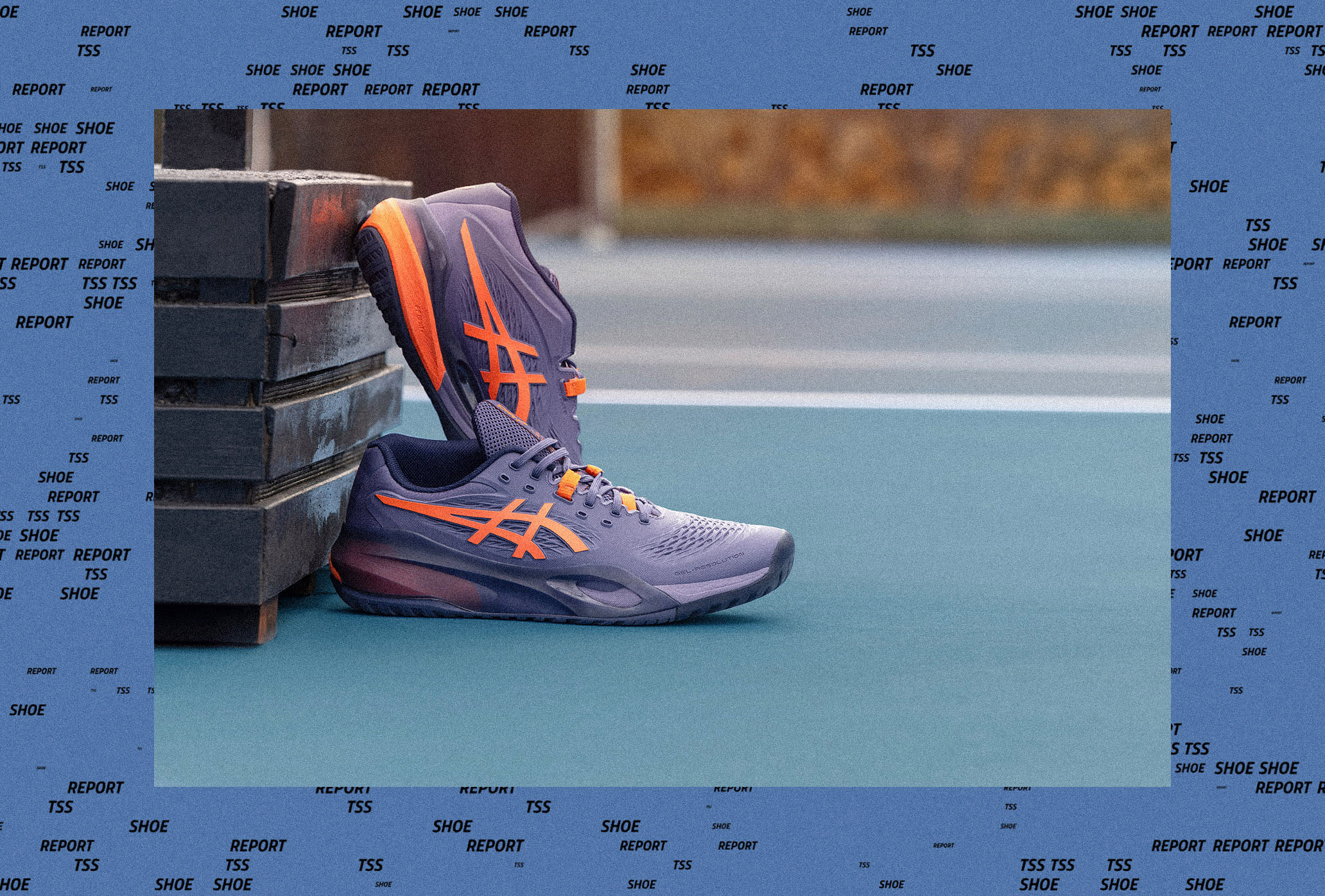
Image courtesy of Asics

Images courtesy of Asics
When it comes to Asics tennis, there’s little else as successful as the brand’s Gel-Resolution sneaker line. The most popular tennis product in brand history—and one of the most popular models in the industry—launched its 10th iteration in January, giving the Gel-Resolution X an update focused on comfort and support, the brand says.
A new midsole design includes both Flytefoam in the forefoot and FF Blast Plus Eco foam in the heel, paired with the brand’s signature gel cushioning, meant to improve the underfoot comfort of the model. An updated Dynawall stability feature on the upper now wraps the heel for improved support.
“The comfort and support in this new model are game changers,” says Brazilian tennis player Beatriz Haddad Maia.
Other design tweaks include a higher medial ankle cut meant to support the ankle and a customizable lacing system. Asics launched the model ahead of the Australian Open and features a range of colors for both men and women.
Follow Tim Newcomb’s tennis gear coverage on Instagram at Felt Alley Tennis.
SIGN UP — YOU'RE ONLY AS GOOD AS YOUR SECOND SERVE.


SIGN UP — YOU'RE ONLY AS GOOD AS YOUR SECOND SERVE.
A Jarring Tableau
A Jarring Tableau
A Jarring Tableau
Novak Djokovic added a master tactician
in coach Andy Murray.
Novak Djokovic added a master tactician in coach Andy Murray.
By Giri Nathan
January 31, 2025
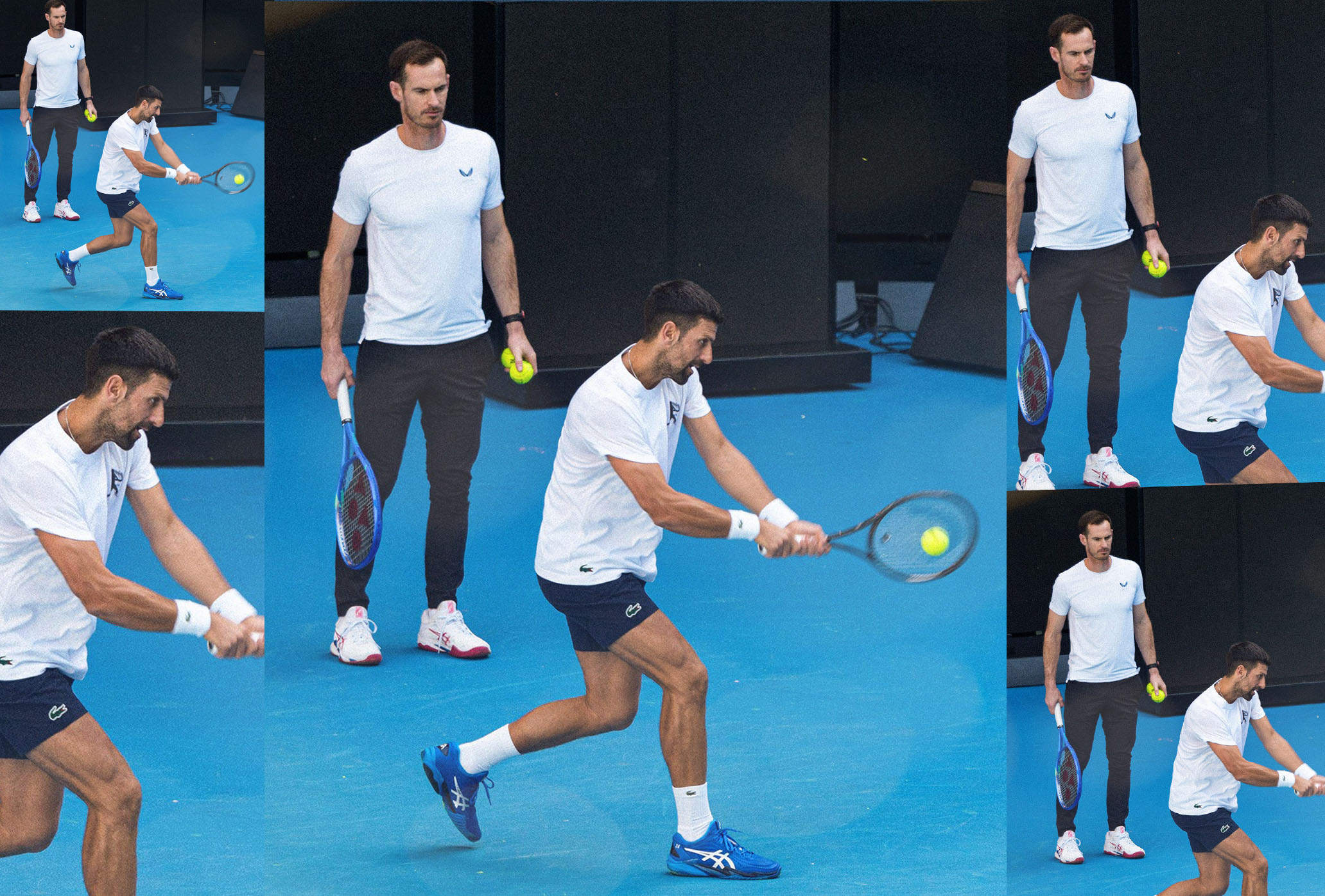
Novak goes to the head of Andy’s class. // Alamy
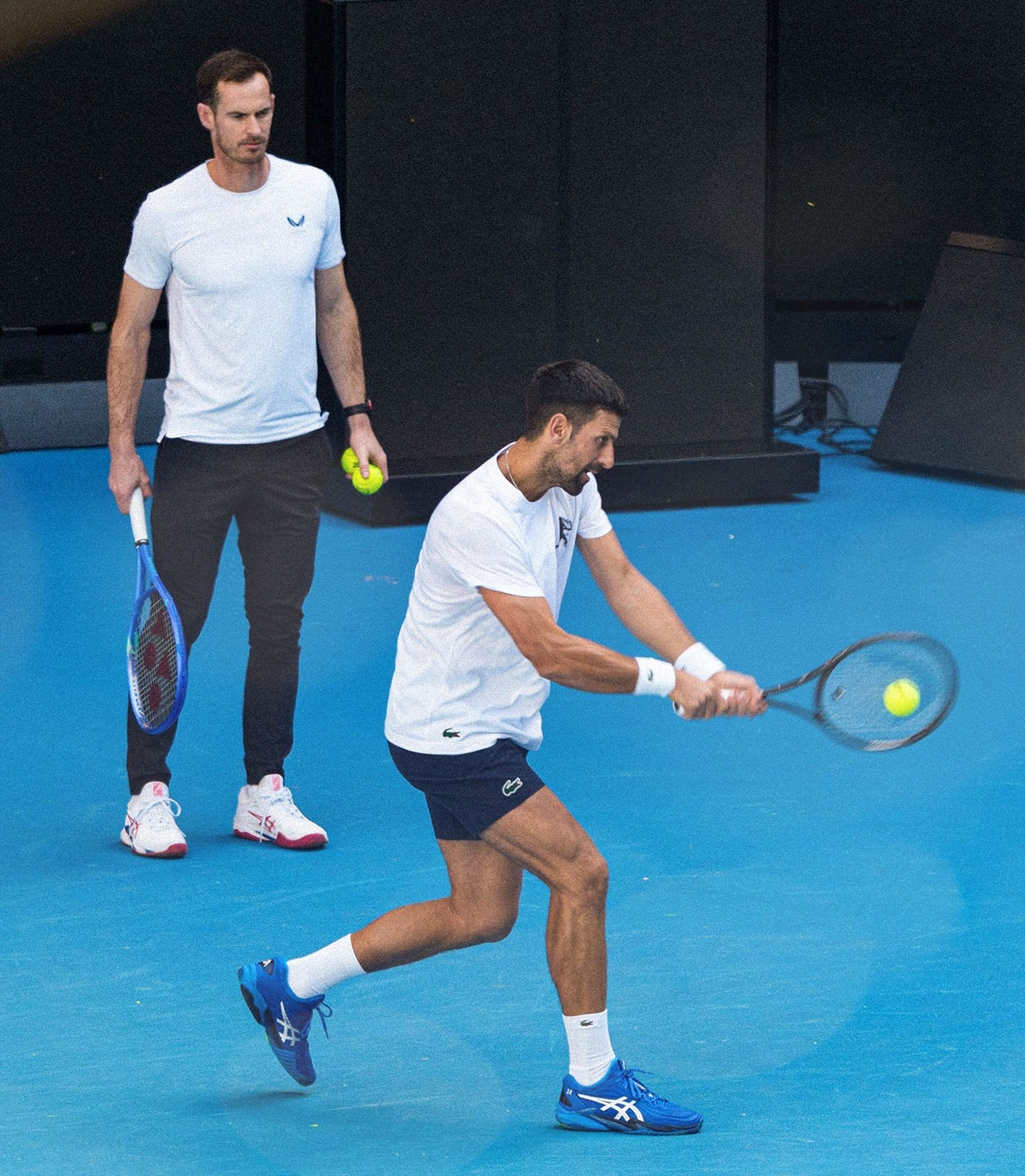
Novak goes to the head of Andy’s class. // Alamy
After stepping away from the tour last summer, Andy Murray followed the destiny of many a retired tennis player: getting extremely into golf. On the side, he was also playing some phone tag with his old colleague Novak Djokovic. It’s a funny story, via Simon Briggs of The Telegraph: “Novak had messaged me, just wanting to chat. It was just before Shanghai [which started on Oct. 2], and we’d exchanged messages and missed calls and stuff. Then eventually I was on the 17th hole of the golf course, and the guy I was playing with said to me, ‘Do you know what’s next?’ I was like, ‘No, not really.’ He said, ‘Do you have any plans to do any coaching?’ And I said, ‘Honestly, I can’t think of anything worse to do right now.’”
After the golf, sitting in his car, he received a phone call from Djokovic inviting him to do just that: coach. Murray had to clear it with his family. They accepted it, on the premise that Djokovic was presumably winding down his career, so it wouldn’t be too extensive of a time commitment. It would also be on a trial basis. Player and coach would spend 10 days training in the offseason, take a break—Murray was headed on a ski vacation with his family—reunite for the Australian Open, and then evaluate the partnership after the tournament.
For Murray, it was a chance to work for a man he’d known since they were juniors, a peer who had once even been recruited to play for the same country. (One of the more amusing counterfactuals on the ATP is Novak Djokovic playing under the Union Jack.) After 36 matches against each other—Djokovic won 25—they’d finally have their incentives aligned. Murray could bring a few things to his rival: a fresh source of motivation for a man who had nothing left to win, an intimate understanding of Djokovic’s own game, the overall tactical savvy that Murray was known for, and scouting reports on the ATP players Murray had been competing with as recently as five months prior. When you poach your coach out of his first year of retirement, those insights are still hot and fresh.
Speaking after their offseason training, Djokovic reported that the partnership was enriching, if peculiar. “Just overall, a very nice and strange feeling to have him on the same side of the court. We have been rivals for 20-plus years and always kind of kept secrets from each other about the way we practiced, the way we prepared, and the way we approached the matches.” It was also peculiar for us watching from the outside. Thanks to the Australian Open’s new courtside coaching boxes, we could see Murray conferring with Djokovic mid-match, miming backhands, muttering his observations, delivering a fist pump here and there, calmly absorbing Djokovic’s outbursts. Murray’s demeanor in the box was quite mild, closer to his dry civilian persona than his vinegary on-court persona. “I felt a lot of nerves and stuff in the buildup to the matches,” said Murray after the tournament, “but when I was watching it I felt like I was able to sort of switch that off. I felt calm at the side and was sort of watching, trying to do my job.”
When the partnership was first announced, it sounded like a stunt, but as the matches went on, and I became desensitized to the jarring tableau, it wasn’t hard to see the appeal. Djokovic had the luxury of discussing nitty-gritty details with a player who’d always been known for his meticulous approach to the game. They spent their time puzzling out “how I can gain an inch more court positioning,” Djokovic said.
Murray, reflecting on their early days together, said in an interview on the Australian TV program The Project that coaching was “more demanding” than he’d expected. “I wish I’d known that when I was playing. Then maybe I would’ve been a bit easier to work with.” To his credit, Murray wasn’t skimping on any of his homework. According to Tim Henman on the Eurosport broadcast, the novice coach had prepared for Djokovic’s first-round match by watching 20 hours(!) of his opponent, who had never before played a main-draw match at a major. Even speaking as a big fan of the young Indian-American, that is just a staggering amount of Nishesh Basavareddy footage to consume.
If that was Murray’s standard, I can’t fathom how much Carlos Alcaraz footage he ate up in anticipation of their Australian Open quarterfinal. Murray, one of the most vocal proponents of young talent you’ll ever see, had identified Alcaraz as a future world No. 1 back in 2021, and in 2024 tweeted “Watching Alcaraz play tennis makes me smile,” with a blushing smile emoji and a heart emoji. Given those facts, it was a little surreal to watch him cheer a 10-time Melbourne champion on to victory over a rising superstar. But that’s what the money is for. After pulling off the spectacular four-set triumph on a bum hamstring, the player screamed in triumph, the coach could be seen letting out an enormous sigh, and the two shared a courtside hug.
A defeat of Alcaraz deep at a Slam was probably something like a 98th percentile outcome for this new partnership. But it also only lasted another set of tennis. Djokovic retired due to his hamstring injury after dropping the first set of his semifinal against Sascha Zverev. “I’ll definitely have a chat with Andy and thank him for being here with me. Give him my feedback, which is, of course, positive, and see how he feels and we make the next step,” said Djokovic after the match. He said they were still “hotheaded and disappointed” and would chat once they’d had a chance to “cool off.” He has yet to offer any public update.
Murray, meanwhile, also had positive reviews of his coaching experience, even if he did feel it was a bit “embarrassing” to get so much credit for Novak’s successes. He said that he felt equipped to handle the strategic and psychological aspects of coaching but still had a lot to learn about the technical side. He also sounded grateful as a pure fan of the sport: “I got to witness some amazing tennis, and one of the best matches that I’ve seen live, against Alcaraz.”
Right after he retired, he tweeted “Never liked tennis anyway.” This from a man who got a metal hip so he could play more of it. Nobody will ever manage to pry him away from this game.


The Hopper
—CLAY Tennis on Beatriz Haddad Maia’s US Open run.
—Giri on Iga Swiatek’s loss to Jess Pegula.
—Jon Wertheim’s mailbag is full this week.
—Sara Errani and Andrea Vavasori have won the US Open mixed doubles.
—Tim Newcomb on Taylor Fritz and Asics.

PURE, ORIGINAL TENNIS — SIGN UP!
K-Swiss Pinnacle
K-Swiss Reaches for New Heights with its Pinnacle
New on-court shoe releases in March.
New on-court shoe releases in March.
By Tim Newcomb
January 30, 2025

Image courtesy of K-Swiss

Images courtesy of K-Swiss
K-Swiss is calling its new March footwear release the Pinnacle, a name meant to telegraph exactly where the shoe falls within its tennis performance lineup.
“We needed to create a high-end, innovative shoe that could compete with the biggest names in the industry, especially at the pro-tour level,” M.J. Kim, K-Swiss footwear designer says. “The goal was to design a standout product that featured the latest technology and was worn by a top athlete like Andrey Rublev.”
Rublev is already wearing the model, having announced the partnership before the 2024 U.S. Open. As K-Swiss welcomes the release of the new Ultrashot 4, which was seen on K-Swiss athletes (and Frances Tiafoe, for that matter) during the 2025 Australian Open, the upcoming Pinnacle offers a tennis sneaker with a full-length carbon-fiber plate, the key technical calling card of the silhouette.
The curved profile of the front of the plate helps with movement in all directions, for improved stability and agility, Kim says. Sandwiching the plate between two types of midsole foams helps improve feel and comfort. The shoe also features a lateral support element, a high-durability outsole, a breathable mesh upper reinforced with TPU, and a lacing system with an internal strap for customized fit.
Kim says the see-through materials and changing opacities help subtly show the technology. “From a distance, the shoe looks like a clean, simple sneaker, making it versatile enough to wear off the court while still showcasing its innovation,” he says. Expect the Pinnacle to release in time for the BNP Paribas Open in Indian Wells this March.
Follow Tim Newcomb’s tennis gear coverage on Instagram at Felt Alley Tennis.
SIGN UP — YOU'RE ONLY AS GOOD AS YOUR SECOND SERVE.

